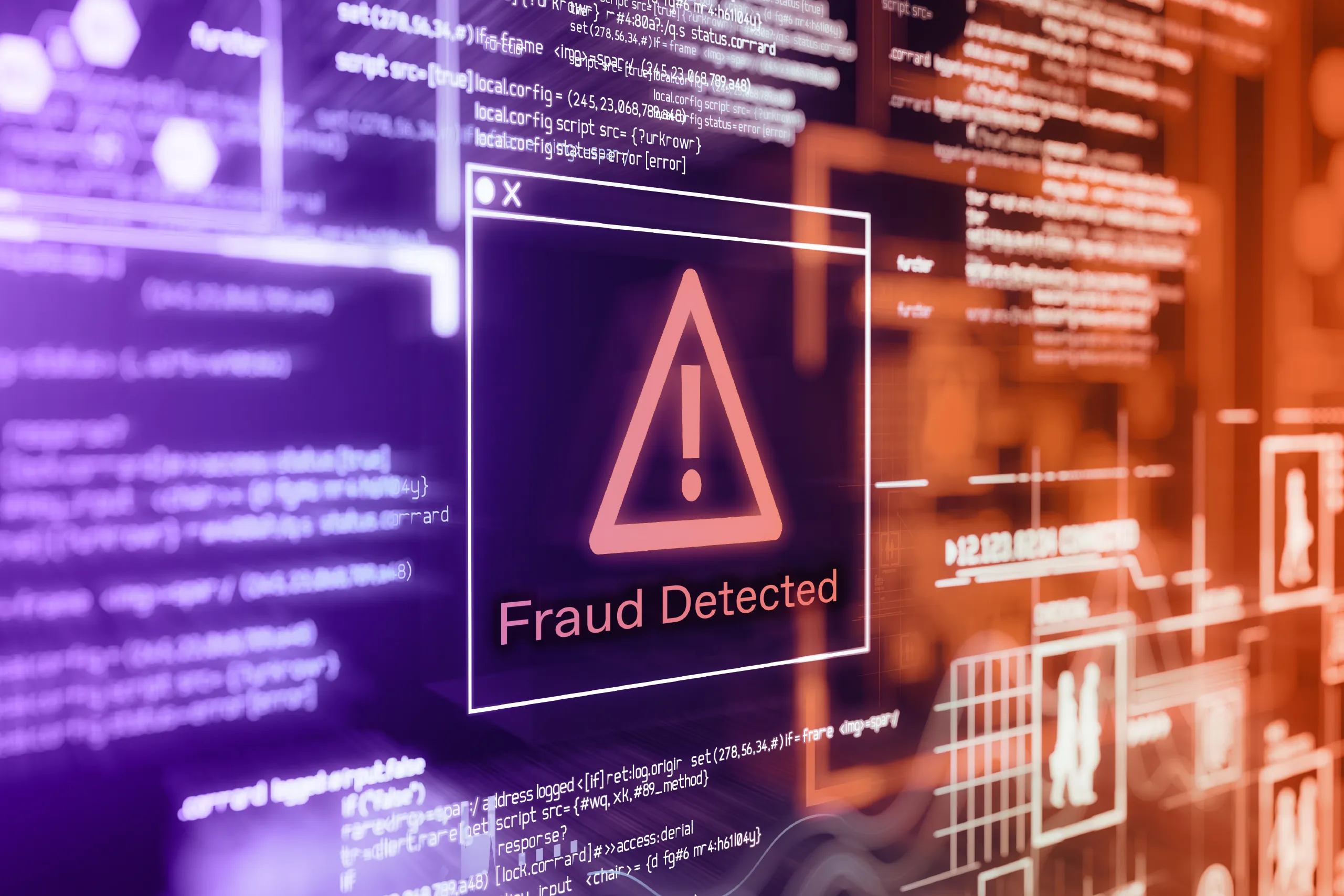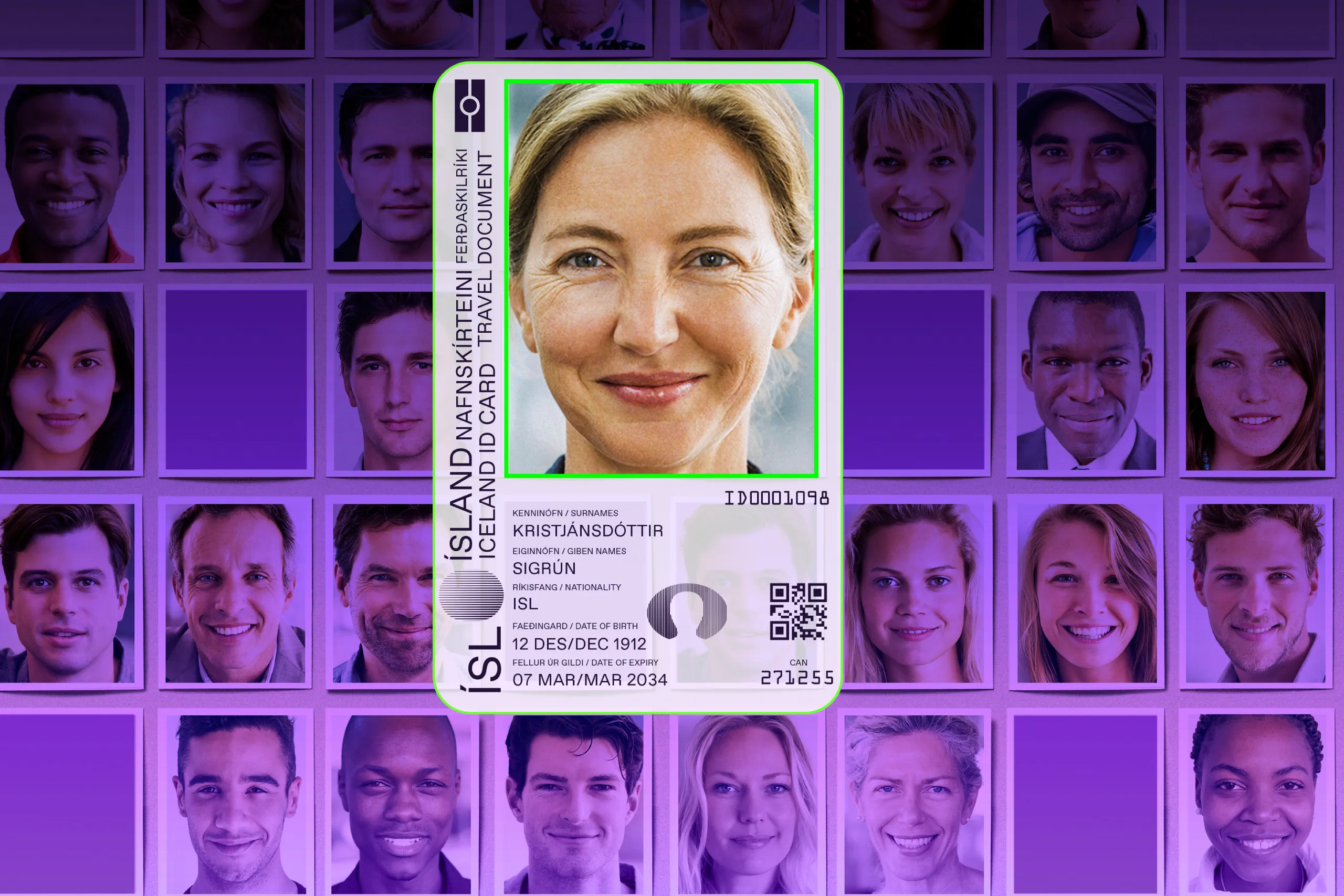Identity documents are falsified in many ways, ranging from minor alterations to genuine IDs, to the creation of forgeries from scratch.
The latest AI technologies simplify the task for fraudsters by providing photo and video generators capable of creating convincing images of any ID document within minutes.
In response, secure printers and providers of secure identity solutions have developed security features such as background and Guilloche patterns, specific inks, and printing techniques. One such advanced feature is holograms.
All these features can be utilized to distinguish between an AI-generated or photoshopped ID document and a physical one presented by a customer remotely.
More companies are integrating document liveness detection, along with user liveness detection, into their identity verification workflows to ensure they are dealing with physical IDs rather than images.
In this article, we’ll demonstrate why this approach is reliable, and describe the anatomy of document liveness detection.
Document liveness detection as a part of the identity verification process
Document liveness detection is one of the key techniques incorporated into the identity verification process. Let’s see how it looks using the example of the Regula identity verification (IDV) flow:
Document capture: At this stage, a user presents their document to the camera on their mobile device, and the necessary data is automatically collected for verification during the guided capture session.
Document assessment: The solution evaluates the document scan and detects its type and key attributes.
Data extraction: Equipped with the most comprehensive document template database, Regula Document Reader SDK applies the relevant layout, and precisely extracts information from the data sources. It decodes all textual and visual data from the document to validate it at the final stage.
Document verification: This process includes dozens of authenticity checks focused on particular elements of the ID, such as barcodes, machine-readable zone (MRZ), and the main and secondary portraits of the holder. Additionally, the solution automatically performs document liveness detection.

The software under the application's hood collects all the data necessary for a liveness detection check using the user’s smartphone. Then, all the data is sent to the company’s server for reprocessing and decision-making.
Subscribe to receive a bi-weekly blog digest from Regula
The science of document liveness detection explained
Document liveness detection is a process within a process. It employs advanced algorithms to analyze the physical characteristics and security features of IDs, effectively helping to prevent printed photo attacks, as well as screen and video replay attacks.
The technology is essential for remote verification, especially during the customer onboarding process. The traditional approach of merely requesting an ID photo, which many companies still rely on, is no longer effective. By opting for a non-liveness IDV process, you remain vulnerable to presentation attacks, such as identity document fraud, when a forged copy, scan, or fake that never existed in reality is submitted to your systems.
Document liveness detection requires user engagement. It typically involves the “shake it” component, and the use of the mobile flashlight to observe the document under white light.
This short demo will give you a better understanding of what happens on the user’s end.
Despite the check taking only seconds, the technical side of the process is somewhat more complicated. The mechanism behind the scenes involves neural networks. Trained on a large number of physical document images, neural networks can easily determine whether a user presents a genuine passport or driver’s license, and evaluate all the peculiarities of the particular document.
Let’s take a look at the process in detail.
Once the type of document presented is identified, the software applies the appropriate document template, for example, one for a Switzerland ID card, then extracts the data and analyzes the security features. For performing a liveness check, dynamic security features are important. However, they are not the only method available.
These features exhibit different effects when the angle of illumination or observation changes. They include, but are not limited to:
Holograms—Diffractive optically variable elements that may contain nano- and/or microprinting, microimages, covert laser-readable images, etc.
Elements printed in Optically Variable Ink (OVI)—These are applied with a non-transparent scaly pigment with a layered structure that allows for color changes.
Multiple laser images (MLIs) and Dynaprint®—Composite images comprising several initial images; when tilting the document with these features, one or the other initial image becomes visible.

Detecting the presence of dynamic security features, such as holograms, in IDs is one of the ways to check document liveness.
The presence of dynamic security features in a document where they should be is crucial for deeming an ID authentic. This is why the larger the document template database, the more precise and accurate the checking process is. For example, Regula now has a library with over 16,000 items from 254 countries and territories, enabling accurate scrutiny of any document submitted by a user. Decades of expertise in developing forensic hardware solutions contributes to our deep knowledge of identity documents.
Since fraudsters use numerous tricks when forging documents, other ID parameters should also be taken into consideration during a liveness check. To confirm that the document isn’t a screenshot or digital image from a tablet or monitor, the IDV software also detects the presence of an electronic device in front of the camera, and identifies the specific effects on the screen.
Additionally, the solution determines the physical parameters of the document by assessing the spatial position and harmonious ratio. This helps verify that the document presented is not an AI-generated fabrication, but an actual physical document.
If each item on the checklist is okay, the system declares that the ID submitted by the user is a physical document.
Why do companies prefer electronic IDs for verification?
There is another option for companies that want to establish a more secure process—verifying users with electronic IDs only. In this case, document liveness detection can be augmented with RFID chip verification.
Year by year, more countries are adopting electronic or biometric identity documents. Typically, they also have robust national digital identification and registration systems that aid in validating such documents for business purposes. However, the key verification component of electronic passports and ID cards is an embedded RFID chip.
An RFID chip is a circuit containing personal information about the document’s holder, including their biometrics, and service data for both chip and ID authentication. This asset is secured with a series of cryptographic mechanisms that make chip cloning or alteration a nearly impossible task for fraudsters.
As a result, many companies, such as those in the Banking sector (like UBS), build their customer identity verification systems around electronic IDs, with RFID chip checking as a core component. According to a recent Regula survey, 58% of businesses globally accept only biometric documents as a proof of identity.
The process takes a few seconds. A user scans their electronic ID with an NFC-enabled smartphone. The IDV software performs all necessary RFID verification checks, and delivers the result—either positive or negative. To prevent injections and other fraudulent tricks during the check, these mobile verification results may be re-verified in the company’s secure perimeter. In this “zero-trust to mobile” paradigm, the results of a check can’t be intercepted and modified directly on the mobile device.

The challenges of ID document liveness detection
There is no one way to verify IDs online, and document liveness detection isn’t a silver bullet either. During the verification process, a number of issues can arise:
Device-related issues
Many customers still use budget smartphones rather than flagship devices, which can lead to two technical limitations. First, their mobile cameras may not be capable of capturing high-quality ID scans.
Document liveness detection requires quality images to verify dynamic security features such as holograms. Blurry images don’t allow for such checks to be carried out effectively.

Mobile devices that customers use to take an ID scan may not have the auto focus to achieve a clear image.
Second, more affordable models of smartphones may not support NFC technology, which is essential for reading RFID chips. This means that even if users possess biometric IDs, they can’t submit them to your system remotely.
Inappropriate environmental conditions
Since document liveness detection involves ID scanning, users should be able to capture a perfect shot. In reality, many customers scan their IDs in a dimly lit room, fail to properly focus their mobile cameras, or overlook glares on laminated surfaces that hide security features and data.
As a result, you may receive darkened, blurry, or flared images that are unsuitable for verification. This can lead to a high retake score and low conversion rate in your apps.


ID scans taken in dimly lit rooms or affected by glares are unsuitable for use during document liveness detection.
An ineffective IDV solution
Document liveness detection is a complex check in terms of the algorithms and technologies used. This is why some vendors don’t include this check among the features of their solutions. The IDV developer should have a thorough understanding of the security features and components of numerous ID documents, and keep their document template database up to date. Otherwise, you may overlook fraudulent attempts to sign up or log in, or encounter false positives, where legitimate customers are mistakenly banned by the algorithms.
Non-tech-savvy customers
Despite the simplicity of the entire document liveness detection procedure, your clients may encounter difficulties when presenting their IDs for this check.


Your app should provide customers with clear instructions to avoid ID scans taken from inappropriate angles or with hands and other objects in the camera's focus.
Poor user experience (UX) and design flaws can confuse customers. Dissatisfied users may abandon the process, negatively impacting your marketing and financial metrics.
How document liveness detection can enhance your IDV flow
With the emergence of document liveness detection technologies, the necessity for real-time video interviews, which many businesses use, is diminishing. Moreover, manual verification checks are often prone to mistakes and biased decisions due to the human-in-the-loop problem. Also, scaling this practice is always a challenge. Therefore, automated solutions are continuing to displace this time-consuming and costly approach.
Now, document liveness detection is becoming an integral part of the entire identity verification process. This means it’s critical to seamlessly incorporate this check in the current flow.
Here are the major components associated with a reliable and accurate document liveness detection procedure:
Advanced technologies under the hood: The IDV software, enhanced with automation, makes the process secure and smooth. Image preprocessing techniques ensure successful document scans on the first try. Automated image refinement algorithms eliminate low-quality shots from the verification pipeline without hassle for users. Determining the type of document presented helps initiate the correct set of checks to validate all details.
In-depth knowledge of identity documents: The IDV solution, relying on a large collection of data, enables accurate verification of dynamic security features and other attributes of physical IDs. Moreover, it helps avoid situations where a legitimate document submitted by a user from a new customer group isn’t recognized.
Perfect UX and UI: A user-friendly interface with clear prompts streamlines the digital onboarding experience for your clients. In a well-guided process, users can take a series of appropriate images for analysis on the first try.
All these components are included in Regula Document Reader SDK, a single-vendor solution that can be easily tailored to your business needs through customization, including localization in 30+ languages.
Book a call with one of our representatives to get a detailed product introduction.





